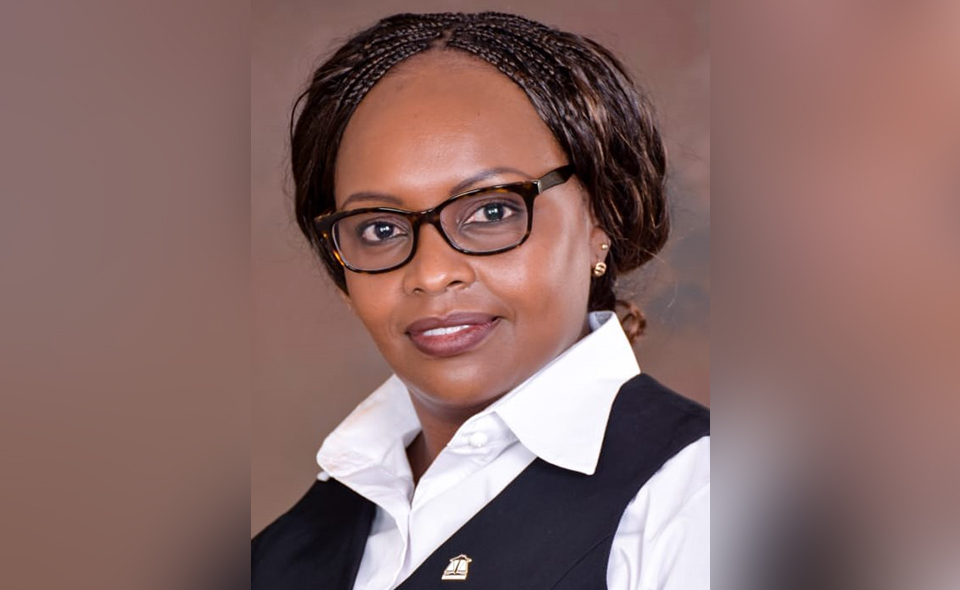In this article we hear from Jacqueline Waihenya, a highly experienced lawyer and ADR specialist, on how the ADR climate is changing in Kenya.
Prior to the introduction of mediation to the Kenya Judiciary in 2016, on what level has alternative dispute resolution (ADR) traditionally been practiced in Kenya?
ADR was formally entrenched in our Constitution, 2010 in Article 159(2)(c) as a principle for exercising judicial authority in Kenya, which laid a constitutional foundation for arbitration and mediation that allowed courts to sanction their use within the court system.
Prior to this, arbitration was practiced in Kenya as an alternative to litigation per the Arbitration Act, 1995 (amended in 2009) based largely on the UNCITRAL Model Law. It was and remains the most prevalent ADR mechanism in commercial disputes. Later on, mediation was introduced as a court-annexed practice in 2012 via our Civil Procedure Act. However, the first cohort of court-annexed mediators were accredited by the Judiciary in 2016. I was accredited as No.005.
However, within Kenyan culture ADR remains widely practiced informally and primarily through negotiation and mediation, especially at family, religious and community levels. Before court accreditation I therefore practiced as a mediator from 2012 and did substantial pro bono work at FIDA Kenya, a female advocate organisation that champions women’s rights. This familiarity with mediation explains its acceptance and uptake in the more formal settings. Parties also appreciate their ability to have a greater say and increased control in the outcome of their cases.
In what ways did the 2012 introduction of the Statute Law (Miscellaneous Amendments) Act No. 12 have on the growth of Kenyan ADR?
Act No.12 of 2012 introduced mediation into our civil procedure process. It defined mediation as an informal and non-adversarial process where an impartial mediator encourages and facilitates the resolution of a dispute between two or more parties and it specifically excluded sitting judges from being considered mediators.
The Act further created a Mediation Accreditation Committee which certifies, accredits and trains mediators. It is this pool of mediators that become eligible to be appointed to mediate matters under the Court-Annexed Mediation program. Initially the pilot program was confined to Nairobi, the capital city, but mediation has since been devolved around the country to different stations with remarkable success.
The other development which indirectly arose from this Act is the emergence of a number of specialised tribunals which have been brought into force via statute. Examples include the Tax Appeals Tribunal, Sports Tribunal and Energy Tribunal. These pieces of legislation also bear strong provisions empowering Tribunals to adopt ADR in their processes, although they are yet to be harmonised and realised practically.
Within Kenyan culture ADR remains widely practiced informally and primarily through negotiation and mediation, especially at family, religious and community levels.
Though the High Court retains a supervisory role over mediation, arbitration and specialised tribunals, recent developments strongly point towards an entrenchment of the doctrine of exhaustion of primary jurisdiction. It is commendable that our courts by and large support the entrenchment of ADR.
Have you witnessed an uptick in client demand for ADR services in recent years?
One of the most enduring effects of recognising ADR within the judicial process is that formalisation institutionalisation has provided great advocacy, particularly for mediation and arbitration. Prior to 2016, ADR in Kenya was synonymous with arbitration and was applied mostly within commercial circles for its traditional benefits – that is, it is confidential, lends itself to specialised commercial needs, is generally quicker than litigation and is enforceable as a court judgment.
After 2016, mediation was introduced for commercial cases and cases in the family division, and the increase in demand was immediate. Initially, most mediators were absorbed by the Court-Annexed Mediation program as a secondary profession. However, in due time, a number turned to mediation as their primary profession.
Since then, mediation has experienced a higher than average growth and mediation outfits have turned to ply their trade privately. Insofar as arbitration is concerned, the number of arbitrators has definitely increased and in the ‘State of ADR’ research carried out by the Chartered Institute of Arbitrators, Kenya recorded a trajectory of growth in 2021. These are outright indicators that client demand for ADR services has increased.
Which sectors are seeing the most demand on the whole?
Court-Annexed Mediation registers the highest rates of adoption within the family division and these are divided into Children Cases, Matrimonial Property and Probate. In Kenya, divorce mediation is expressly prohibited as conniving, condoning or consenting to a divorce is not allowed under our laws. Commercial mediation has further attracted high-value claims which have been resolved within a fraction of the time that was previously spent on the dispute resolution process. A new area that has also registered significant success is the employment and labour division.
Arbitration remains the most demanded ADR mechanism for commercial disputes. The case of construction disputes is bifurcated as a good number of standard form contracts also provide for construction adjudication prior to the appointment of an arbitrator.
Generally speaking, what is the attitude that is held towards ADR methods in Kenya?
The general attitude towards ADR methods in Kenya is favourable. They resonate with the cultural frameworks of the country and their gradual recognition as formal methods of dispute resolution has enabled strong and decisive dispute resolution stakeholder engagements at the Chartered Institute of Arbitrators Kenya and likeminded institutions such as the Nairobi Centre for International Arbitration (NCIA). These organisations have been enabled to better engage with the judiciary, led by successive chief justices as well as the attorney generals of the country since the promulgation of the Constitution.
Insofar as arbitration is concerned, the number of arbitrators has definitely increased
The judiciary has in fact been the frontrunner in the deepening of mediation. Today, mediation and ADR are recognised by the judiciary as a strong pillar of social transformation in the dispensation of justice.
Having been a member of the National Steering Committee that steered the National ADR Policy which was recently approved by the Kenyan Cabinet I believe that our country’s attitude is positive and we can expect that the practice of mediation, arbitration and construction adjudication will be further streamlined and enhanced.
As far as mediation goes, what models are typically used?
Kenyan law favours the traditional facilitative mediation model, which can be gleaned from the definition adopted by Act No.12 of 2012. Practically all training institutions train mediators using this model, and where mediators have departed from this in resolving disputes this has formed the basis for challenge in courts. As such, evaluative mediation is not encouraged. Personally, I aim for transformative mediation models where possible, as this lends itself to long-term resolution. In the majority of mediations that I have handled, the time constraint has demanded a facilitative approach.
What work are you and other practitioners doing to increase the provenance of ADR throughout the country?
As Vice Chairperson of the Chartered Institute of Arbitrators Kenya Branch I chaired a taskforce which brought together the mediating community in our first CIARB Mediation Conference in October 2022 under the theme: ‘The Coming of Age for Mediation: Encounter from Africa’. This attracted over 200 delegates in addition to speakers and representation from the Kenyan judiciary, academics, CIARB, NCIA, mediating institutions and individuals from Kenya, Uganda, Rwanda, Tanzania and the UK. The Law Society of Kenya and East Africa Law Society were also present. It provided a platform to share experiences and discuss emerging issues.
On a more personal level, what was it that drew you to specialise in ADR in your legal practice?
I was introduced to arbitration during my pupillage from the perspective of counsel and as they say, one tends to follow in the footsteps of their pupil masters. However, it took me over a decade of practice to take the plunge and acquire formal introduction into arbitration and then mediation and construction adjudication in quick succession. As most ADR professionals will confess, that initial immersion was like a breadth of fresh air. It took determination to unlearn many of the sins that litigation lawyers tend to acquire in the course of adversarial practice, and the journey has been one of self-reflection compounded by the varied responses that I have received from parties depending on the type of ADR at hand.
[ymal]
Today, I am a Chartered Arbitrator (CIARB), Chartered Mediator (ICMC) and Certified Advanced Construction Adjudicator (CIARB) living the multi-door dispute resolution dream. I have undertaken practical training with FIDIC at Kings College London and locally in Kenya and I am at the tail end of a second LLM master’s degree in International Dispute Resolution. As a neutral in arbitration, mediation and construction adjudication I have had the opportunity to resolve disputes that have been international or domestic in nature.
I believe that each dispute lends itself to a suitable dispute resolution mechanism and I have therefore taken the time to consistently increase my knowledge in arbitration, mediation and construction adjudication. In this way, I equip myself with the right set of tools to engage the appropriate dispute resolution mechanism for each dispute at hand. My journey so far has taken me to the International Mediation Institute (IMI) where I am a Certified Mediator and more recently to the inaugural FIFA Accredited Mediators.
I have had a great opportunity to have a front row seat to the ADR that works and I continue to mediate and adjudicate. I have also had several opportunities to engage in scholarship in mediation, construction adjudication and arbitration by writing articles as well as organising and addressing domestic and international conferences and workshops on the same.
Jacqueline Waihenya, Managing Partner
Moi Avenue, Jubilee Arcade, Third Floor – Office Suite No.13, Mombasa, Kenya
Jacqueline Waihenya is an advocate of the High Court of Kenya and managing partner of JWM Law LLP. Jacqueline is an ADR Expert and a Chartered Arbitrator of the Chartered Institute of Arbitrators (C.ARB/FCIARB), an International Federation of Consulting Engineers FIDIC Legal Professional and a member of the Dispute Resolution Board Foundation (DBRF). She is also a member of the Adjudication Society (London) and its Women in Adjudication branch.
JWM Law LLP is a full service corporate law firm based in Kenya. The firm’s staff handle a wide array of litigation, alternative dispute resolution, corporate governance and other legal matters. The firm also closely monitor events and trends and has developed a strategic sense for their dynamics and direction.





















